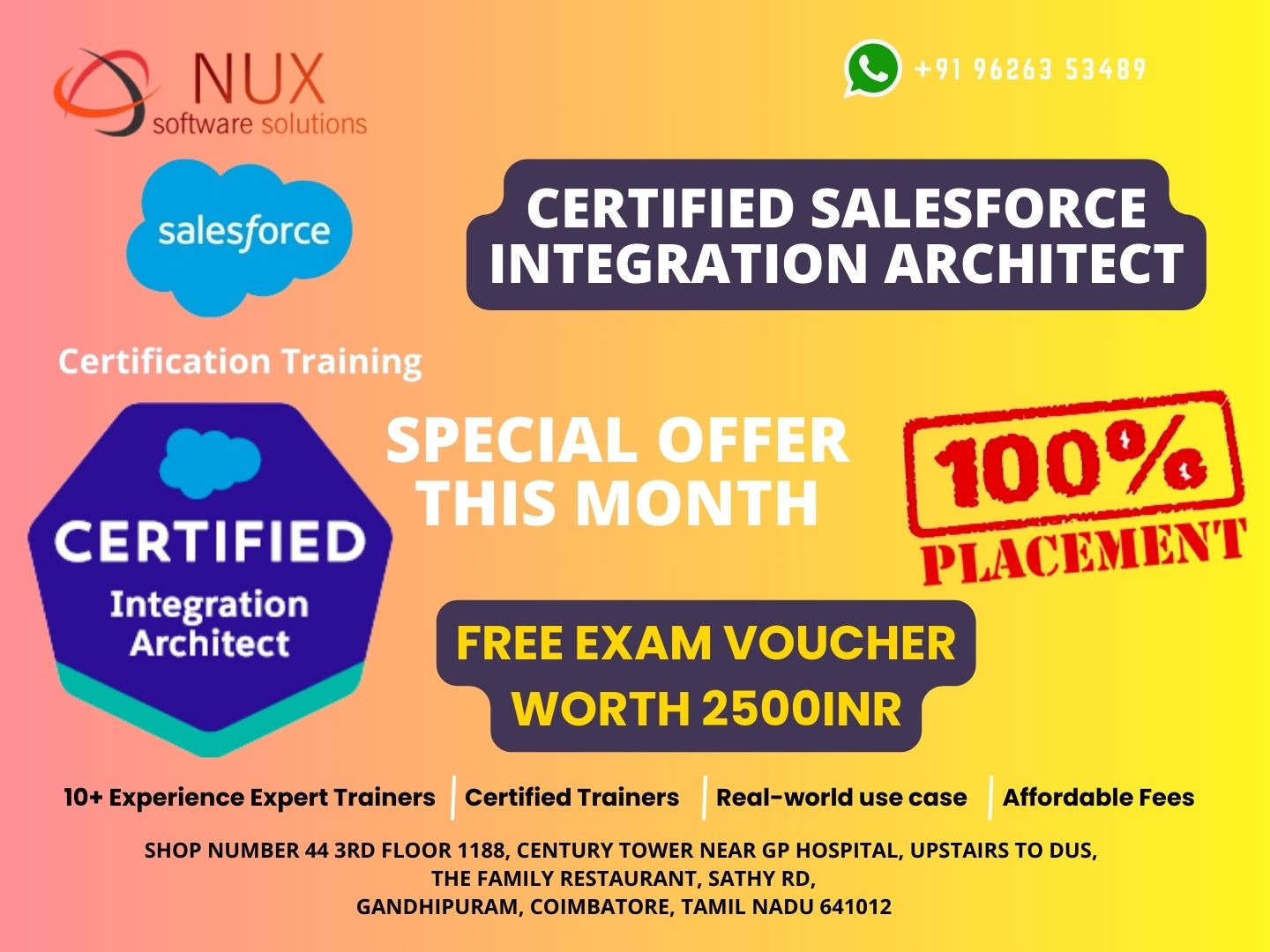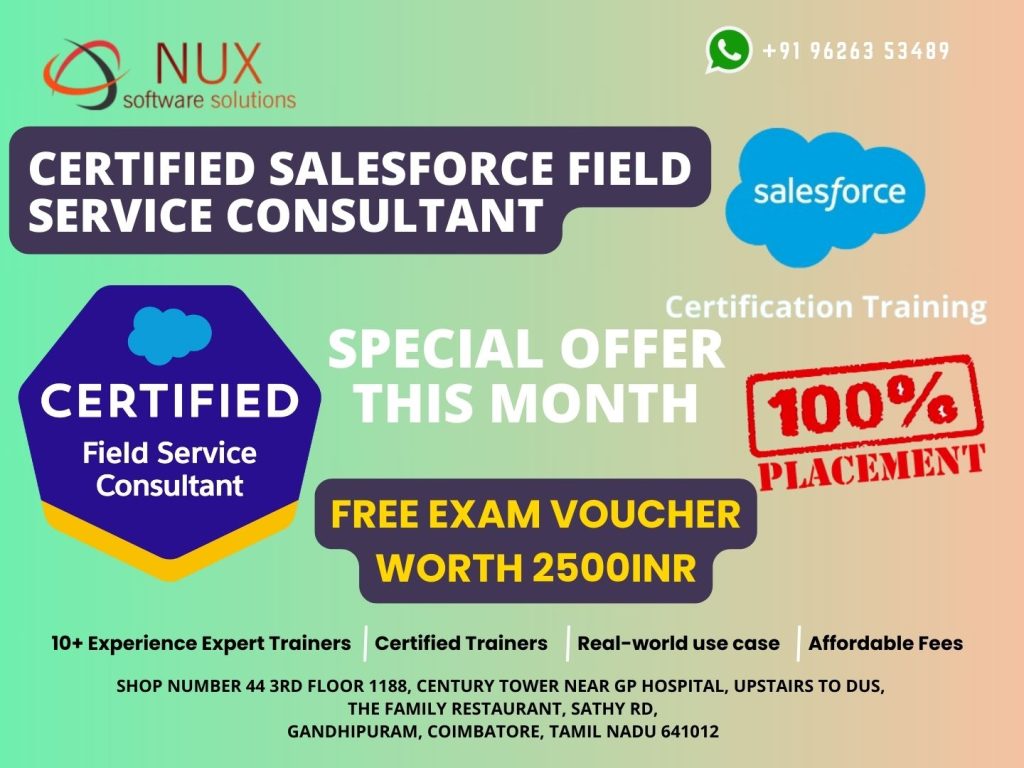Certified salesforce-integration-architect Training and certification in Coimbatore

Course Summary
The Salesforce Certified Integration Architect credential validates your expertise in designing and implementing integration solutions that are secure, scalable, and maintainable across the Salesforce platform and external enterprise systems. This training focuses on real-world scenarios involving APIs, middleware, data synchronization, event-driven architecture, and system authentication.
This course prepares participants to architect complex integrations across multiple systems while ensuring governance, performance, and data consistency—empowering them to support mission-critical business processes across diverse industries.
Why Choose This Course
Salesforce integrations are at the core of digital ecosystems, and the demand for Integration Architects is soaring. This course helps you:
Build mastery in REST/SOAP APIs, Platform Events, and Integration Patterns
Prepare thoroughly for the Salesforce Integration Architect certification
Learn to solve real-time, batch, and hybrid integration challenges
Become a trusted technical leader in enterprise connectivity and system orchestration
Future-proof your career with a credential recognized by Salesforce partners and global enterprises
Who Should Enroll
This course is ideal for:
Salesforce Technical Architects and Developers working on cross-system solutions
Middleware specialists and integration consultants transitioning to Salesforce
Enterprise architects and solution designers leading digital transformation
Professionals preparing for the Salesforce Certified Integration Architect exam
Organizations adopting Salesforce in multi-platform or cloud-native environments
Skills You Will Gain
Designing integration strategies using real-time and batch processes
Leveraging Salesforce APIs (REST, SOAP, Bulk, Streaming) effectively
Handling authentication models like OAuth 2.0, SAML, and JWT
Working with external systems, middleware platforms, and data virtualization
Applying best practices for governance, error handling, and performance tuning
Career Benefits
After completing this course, you will:
Be prepared to pass the Salesforce Integration Architect certification exam
Qualify for roles such as Integration Architect, Salesforce Technical Lead, or Enterprise Architect
Gain advanced skills in designing robust system architectures for global-scale applications
Be equipped to lead integration for Salesforce + ERP, HCM, marketing, and legacy systems
Join an elite tier of professionals responsible for connectivity in digital transformation
Connect Everything. Architect for Performance.
In today’s interconnected business world, integration is no longer optional—it’s strategic. This course empowers you to become the architect that enables seamless communication between systems, users, and business processes.
Join the Salesforce Integration Architect training at Linux Training Center, Coimbatore.



